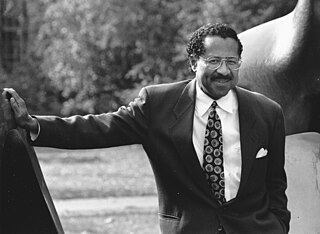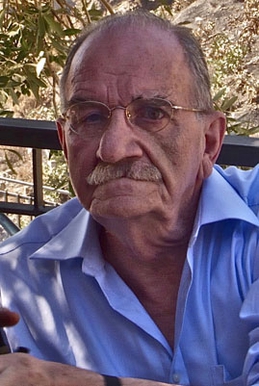Related Research Articles

The World Trade Center in New York City collapsed on September 11, 2001, as result of the al-Qaeda attacks. Two commercial airliners hijacked by al-Qaeda terrorists were deliberately flown into the Twin Towers of the complex, resulting in a total progressive collapse that killed almost 3,000 people. It is the deadliest and most costly building collapse in history.
Earthquake engineering is an interdisciplinary branch of engineering that designs and analyzes structures, such as buildings and bridges, with earthquakes in mind. Its overall goal is to make such structures more resistant to earthquakes. An earthquake engineer aims to construct structures that will not be damaged in minor shaking and will avoid serious damage or collapse in a major earthquake. A properly engineered structure does not necessarily have to be extremely strong or expensive. It has to be properly designed to withstand the seismic effects while sustaining an acceptable level of damage.
Applied mechanics is the branch of science concerned with the motion of any substance that can be experienced or perceived by humans without the help of instruments. In short, when mechanics concepts surpass being theoretical and are applied and executed, general mechanics becomes applied mechanics. It is this stark difference that makes applied mechanics an essential understanding for practical everyday life. It has numerous applications in a wide variety of fields and disciplines, including but not limited to structural engineering, astronomy, oceanography, meteorology, hydraulics, mechanical engineering, aerospace engineering, nanotechnology, structural design, earthquake engineering, fluid dynamics, planetary sciences, and other life sciences. Connecting research between numerous disciplines, applied mechanics plays an important role in both science and engineering.

Some conspiracy theories contend that the collapse of the World Trade Center was not solely caused by the airliner crash damage that occurred as part of the September 11 attacks, and the resulting fire damage, but by explosives installed in the buildings in advance. Controlled demolition theories make up a major component of 9/11 conspiracy theories.
T. Leslie Youd is an American geotechnical engineer and earthquake engineer, specializing in soil liquefaction and ground failure. He currently lives in Orem, Utah.
Arthur Casagrande was an American civil engineer born in Austria-Hungary who made important contributions to the fields of engineering geology and geotechnical engineering during its infancy. Renowned for his ingenious designs of soil testing apparatus and fundamental research on seepage and soil liquefaction, he is also credited for developing the soil mechanics teaching programme at Harvard University during the early 1930s that has since been modelled in many universities around the world.
Arthur Claude Ruge was an American mechanical engineer and inventor who developed and pioneered the modern bonded wire resistance strain gauge.

Progressive collapse is the process where a primary structural element fails, resulting in the failure of adjoining structural elements, which in turn causes further structural failure.
Simpson Gumpertz & Heger Inc. (SGH) is a privately held ENR 500 engineering firm that designs, investigates, and rehabilitates structures and building enclosures. Their work encompasses commercial, institutional and residential buildings, transportation, water/wastewater, nuclear, science, and defense structure projects throughout the U.S. and over twenty foreign countries. SGH has 625 employees at eight offices in Atlanta, Boston, Chicago, Houston, New York City, Oakland, Southern California and Washington, D.C.
Satya Atluri was an Indian American engineer, educator, researcher and scientist in aerospace engineering, mechanical engineering and computational sciences, who was a Distinguished Professor Emeritus of Aerospace Engineering at the University of California, Irvine. Since 1966, he made fundamental contributions to the development of finite element methods, boundary element methods, Meshless Local Petrov-Galerkin (MLPG) methods, Fragile Points Methods (FPM), Local Variational Iteration Methods, for general problems of engineering, solid mechanics, fluid dynamics, heat transfer, flexoelectricity, ferromagnetics, gradient and nonlocal theories, nonlinear dynamics, shell theories, micromechanics of materials, structural integrity and damage tolerance, Orbital mechanics, Astrodynamics, digital Twins of Aerospace Systems, etc.
Jai Krishna was an eminent civil engineer from India with specialisation in earthquake engineering. He served University of Roorkee for many years and rose to become its Vice Chancellor.
Architects & Engineers for 9/11 Truth, Inc. (AE911Truth) is an American non-profit organization promoting the conspiracy theory that the World Trade Center was destroyed in a controlled demolition, disputing accepted conclusions around the September 11 attacks, including the 9/11 Commission Report, as well as FEMA's "WTC Building Performance Study" (2002). Their claims and theories lack support among the relevant professional communities.

The Department of Civil and Environmental Engineering is the academic department at Imperial College London dedicated to civil engineering. It is located at the South Kensington Campus in London, along Imperial College Road. The department is currently a part of the college's Faculty of Engineering, which was formed in 2001 when Imperial College restructured. The department has consistently ranked within the top five on the QS World University Rankings in recent years.

Harry Bolton Seed was an educator, scholar, former professor at the University of California, Berkeley. He was regarded as the founding father of geotechnical earthquake engineering.

James Henry Williams Jr. is a mechanical engineer, consultant, civic commentator, and teacher of engineering. He is currently Professor of Applied Mechanics in the Mechanical Engineering Department at the Massachusetts Institute of Technology (MIT). He is regarded as one of the world's leading experts in the mechanics, design, fabrication, and nondestructive evaluation (NDE) of nonmetallic fiber reinforced composite materials and structures. He is also Professor of Writing and Humanistic Studies at MIT.

Nicholas Neocles Ambraseys FICE FREng was a Greek engineering seismologist. He was emeritus professor of engineering seismology and senior research fellow at Imperial College London. For many years Ambraseys was considered the leading figure and an authority in earthquake engineering and seismology in Europe.

Earthquake rotational loading indicates the excitation of structures due to the torsional and rocking components of seismic actions. Nathan M. Newmark was the first researcher who showed that this type of loading may result in unexpected failure of structures, and its influence should be considered in design codes. There are various phenomena that may lead to the earthquake rotational loading of structures, such as propagation of body wave, surface wave, special rotational wave, block rotation, topographic effect, and soil structure interaction.

Medhat Haroun was an Egyptian-American expert on earthquake engineering. He wrote more than 300 technical papers and received the Charles Martin Duke Lifeline Earthquake Engineering Award (2006) and the Walter Huber Civil Engineering Research Prize (1992) from the American Society of Civil Engineers.

Rotational components of strong ground motions refer to variations of the natural slope of the ground surface due to the propagation of seismic waves. Earthquakes induce three translational and three rotational motions on the ground surface. To study the nature of strong ground motions, seismologists and earthquake engineers deploy accelerometers and seismometers at various distances from active faults on the ground surface or bedrock in order to record the translational motions of ground shaking. The corresponding rotational motions are, then, estimated in terms of the gradient of the recorded translational ground motions. Different methods may be adopted for the indirect estimation of the earthquake rotational components, such as time derivation and finite difference. Specialized instruments, such as gyroscopes and tiltmeters, which can detect small changes in the orientation of the ground surface, may be used to directly measure rotational ground motions. Currently, ring laser gyroscopes are widely used to measure the amplitude of rotational movements of the ground surface.
Arturo Arias Suárez was a Chilean engineer and scientist, known for his contributions in the fields of soil mechanics, earthquake engineering and seismology.
References
- 1 2 "MIT - Faculty". Department of Civil and Environmental Engineering. Massachusetts Institute of technology. Retrieved 29 August 2015.
- 1 2 "Prof Eduardo Kausel". The Earthquake Engineering and Engineering Seismology Programme of the Graduate School in Understanding and Managing Extremes. Rose School. Retrieved 29 August 2015.
- ↑ E. Kausel Consulting Engineer. Number 94-553-0442: Dun & Bradstreet.
{{cite book}}: CS1 maint: location (link) - ↑ "Atlantica Yield: Board of Directors".
- ↑ Kausel, Eduardo (September 2010). "Early history of soil–structure interaction". Soil Dynamics and Earthquake Engineering. 30 (9): 822–832. doi:10.1016/j.soildyn.2009.11.001. hdl: 1721.1/101654 .
- ↑ Kausel, Eduardo (May 1981). "An Explicit Solution for the Green's Functions for Dynamic Loads in Layered Media". MIT Research Report R81-13. Department of Civil Engineering, MIT.
- ↑ US Patent No. 7,835,226-B2. November 2010.
- ↑ Kausel, E.; Manolis, G. (1999). Wave Motion in Earthquake Engineering. Southampton, UK: WIT Press.
- 1 2 Kausel, Eduardo, ed. (2001). Towers Lost and Beyond.
- ↑ Kausel, Eduardo (2006). Fundamental Solutions in Elastodynamics: A Compendium. Cambridge, UK: Cambridge University Press.
- ↑ "Publications of Eduardo Kausel". MIT. Retrieved 29 August 2015.
- ↑ "First Tower to Fall was Hit a Higher Speed, Study Finds". The New York Times. The New York Times. February 23, 2002.
- ↑ Ashley, Steven. "When the Twin Towers Fell". Scientific American.
- ↑ "Greater Boston with Emily Rooney". PBS. March 26, 2002.
- ↑ "How the Twin Towers Collapsed". Channel 4 (UK). December 13, 2001.
- ↑ "Final Report on the Collapse of the World Trade Center Towers". NIST –NCSTAR 1. National Institute of Standard and Technology. September 2005.
{{cite journal}}: Cite journal requires|journal=(help)